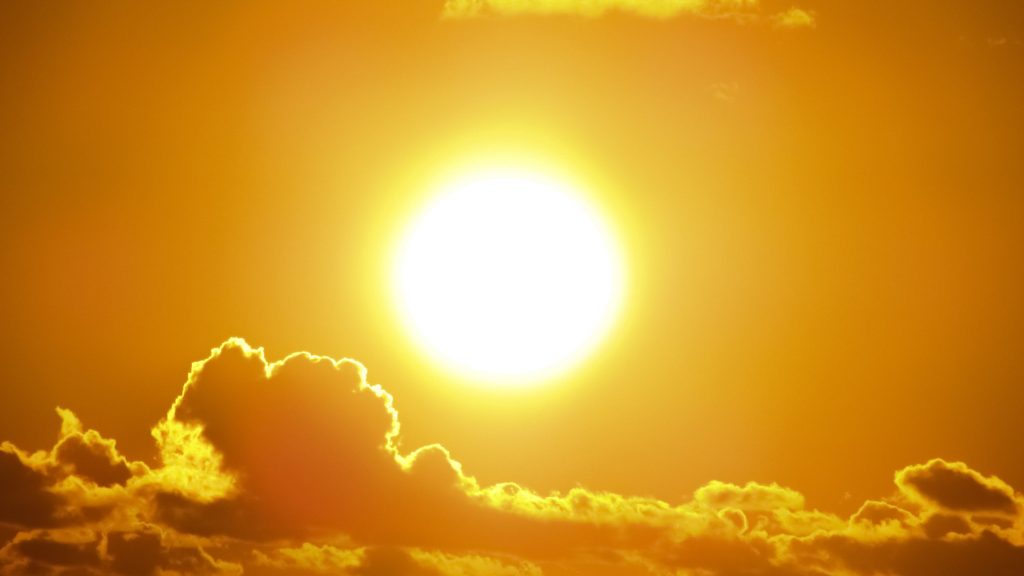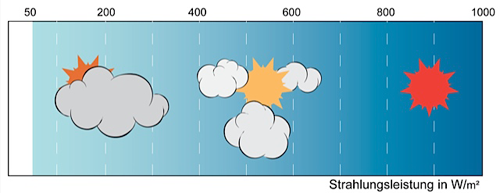How much energy do we get from solar radiation?

Solar energy reaches the earth in the form of radiation. The total amount of radiation reaching the earth’s surface is called “global radiation”. It is made up of direct and diffuse radiation. Diffuse radiation is that which is scattered or reflected by clouds or dust particles, for example, while direct radiation reaches the earth’s surface in a straight path and undisturbed. Both are used to produce energy, even if the diffuse radiation makes a smaller contribution. This means that energy generation does not only work with direct sunlight, but in principle with light (i.e. during the day, even when it is cloudy).
Depending on the time of day, degree of cloudiness, haze, etc., between 50 W/m2 and 1,000 W/m2 of global radiation reaches the earth, whereby the proportion of diffuse radiation is higher in Central Europe than in Central Africa, for example.

Figure 3: Radiant power in different weather conditions (Source: GrAT)
If the global radiation is measured over a longer period of time (e.g. one year), the values at night and under cloud cover are also included. This results in average values for Austria, for example, ranging from about 1,100 kWh/m2a (e.g. in Vienna or parts of Upper and Lower Austria) to over 1,400 kWh/m2a (e.g. in the southern Alpine regions).

Figure 4: Average annual sum of global radiation on the horizontal plane in Austria
(Source: ZAMG)

 Disclaimer: Powered by Erasmus+, ACTeco, ASBN and d.sign Gruber & Partner
Disclaimer: Powered by Erasmus+, ACTeco, ASBN and d.sign Gruber & Partner
You must be logged in to post a comment.